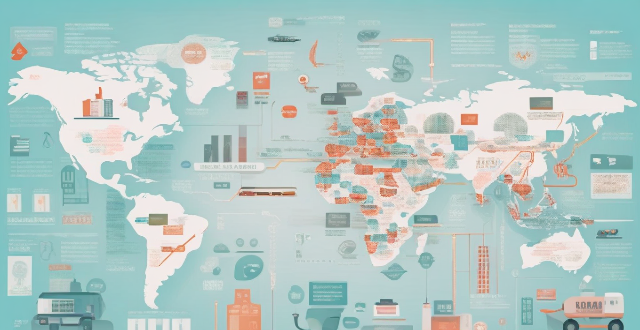Flood control and management strategies vary across different countries, influenced by factors such as geographic location, climate conditions, economic resources, and technological advancements. The United States relies on early warning systems, flood insurance programs, and floodplain zoning regulations. The Netherlands invests in flood barriers and dikes, water management policies, and international cooperation. China focuses on the Three Gorges Dam, flood prevention campaigns, and reforestation efforts. India adopts community-based approaches, integrated water resource management, and disaster risk reduction programs.

Flood Control and Management Strategies in Various Countries
Introduction
Floods are natural disasters that can cause significant damage to infrastructure, property, and human lives. Different countries have developed various strategies to control and manage floods based on their geographic location, climate conditions, economic resources, and technological advancements. In this article, we will explore how different countries approach flood control and management.
United States
Early Warning Systems
The United States has implemented advanced early warning systems such as weather radars, rain gauges, and river level sensors to detect potential floods. These systems provide real-time data to meteorologists and emergency response teams, allowing them to issue timely warnings to the public.
Flood Insurance Programs
The U.S. government offers flood insurance programs through the National Flood Insurance Program (NFIP), which helps homeowners and businesses recover from flood damages by providing financial assistance for rebuilding and repair costs.
Floodplain Zoning Regulations
Many states in the U.S. have implemented floodplain zoning regulations that restrict development in areas prone to flooding. These regulations aim to minimize the impact of floods on communities by reducing the number of structures at risk of flooding.
Netherlands
Flood Barriers and Dikes
The Netherlands is known for its extensive network of flood barriers and dikes, which protect low-lying areas from sea level rise and storm surges. The country has invested heavily in maintaining and upgrading its flood defenses, including the construction of the world-famous Maeslantkering storm surge barrier near Rotterdam.
Water Management Policies
The Dutch have adopted a proactive approach to water management, focusing on integrating flood control measures into urban planning and design. This includes creating green spaces that can absorb excess water during floods, constructing buildings with raised foundations, and implementing sustainable drainage systems.
International Cooperation
The Netherlands actively collaborates with neighboring countries on flood control projects, such as the Rhine River flood management plan, which involves coordinated efforts among Germany, France, and Switzerland to reduce the risk of flooding along the river.
China
Three Gorges Dam
China's Three Gorges Dam is one of the largest hydroelectric power stations in the world and plays a crucial role in flood control along the Yangtze River. The dam can store vast amounts of water during heavy rainfall events, reducing downstream flood risks.
Flood Prevention Campaigns
The Chinese government conducts annual flood prevention campaigns to raise awareness about flood risks among the public. These campaigns include educational programs, drills, and exercises aimed at preparing communities for potential floods.
Reforestation Efforts
China has initiated large-scale reforestation projects to restore degraded lands and improve soil quality, which helps reduce surface runoff and mitigate flood risks. The government also promotes afforestation activities among local communities to encourage participation in environmental conservation efforts.
India
Community-Based Approaches
India has adopted community-based approaches to flood control and management, involving local residents in flood preparedness activities such as building embankments, creating check dams, and constructing drainage channels. This grassroots strategy empowers communities to take ownership of their safety and resilience against floods.
Integrated Water Resource Management
India has implemented integrated water resource management policies that emphasize the need for balanced use of water resources while considering ecological concerns. This includes developing sustainable irrigation practices, conserving wetlands, and restoring depleted groundwater reserves.
Disaster Risk Reduction Programs
The Indian government has launched various disaster risk reduction programs aimed at improving emergency response capabilities and enhancing public awareness about flood risks. These programs include training workshops for emergency responders, distribution of flood warning systems, and establishment of shelters for displaced individuals during floods.